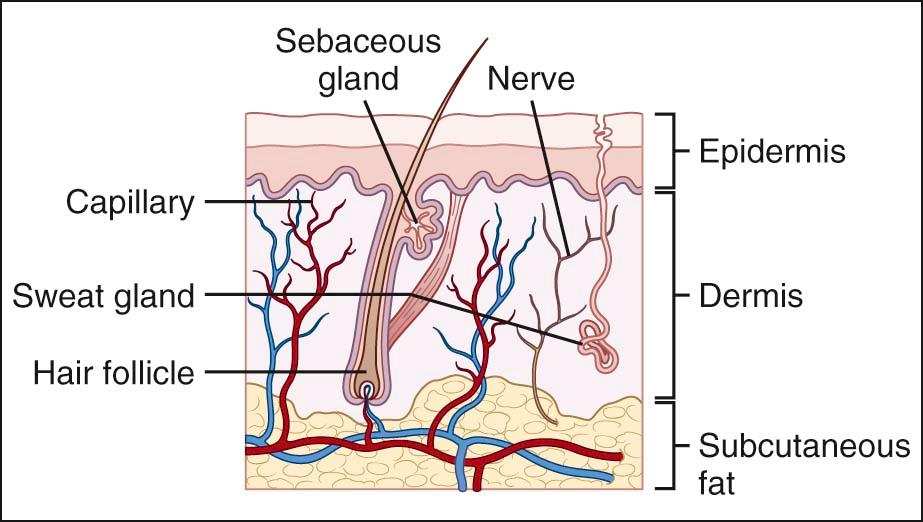Physical Address
304 North Cardinal St.
Dorchester Center, MA 02124
Skin laxity is defined as the acquired loose, relaxed state of the skin that develops with age as a result of skin extensibility (stretch) and decreased skin recoil (return to original state after stretch)
Intrinsic and extrinsic aging cause specific cutaneous changes, such as epidermal thinning, loss of collagen, degradation of elastin, and redistribution of subcutaneous fat, that all lead to significant skin laxity
Factors that exacerbate skin laxity include advanced age, cumulative ultraviolet light exposure, smoking, menopause, and rapid weight gain
Non-invasive treatment modalities, such as lasers, radiofrequency and high frequency ultrasound, aim to restore skin elasticity through stimulation of dermal fibroblasts, dermal reorganization, and collagen remodeling. Minimally invasive procedures, such as dermal fillers and autologous fat transfer, aim to restore skin turgor and volume. Surgical procedures such as rhytidectomy and blepharoplasty permanently remove excess or lax skin
Skin laxity is an acquired cutaneous state in which the skin becomes loose and lax secondary to loss of elasticity. Elasticity is defined as the ability of a material to return to its original state after stretching or straining. The amount of strain a material can endure before breakage is referred to as extensibility. Younger skin exhibits resilient elasticity and recoil when under stretch or stress. With age, elasticity begins to decrease at an early time point while extensibility is maintained well into the seventh decade of life, leading to gradual progression of skin slackness.
The skin is composed of three distinct layers, the epidermis, dermis, and hypodermis or subcutaneous tissue, that all undergo significant alterations as an individual ages ( Fig. 1.1 ), with one manifestation being change in skin elasticity. Cutaneous aging results from the interplay of several intrinsic and extrinsic factors. Intrinsic aging is a naturally occurring process caused by several factors including gradual oxidative damage and reduction in the rate of skin cell replication (resulting in dermal atrophy), elastic fiber degeneration, and loss of hydration, among many other microscopic changes. Extrinsic aging is due to environmental factors such as sun damage and smoking. Chronic ultraviolet (UV) exposure is the major cause of extrinsic aging, otherwise referred to as photoaging. Photoaging, superimposed on intrinsic aging, causes most of the visible age-related changes in the skin.
As chronic UV exposure is the single most important factor in extrinsic damage to the skin, the importance of mitigation through diligent sunscreen use and other sun-protective behaviors should be stressed to every dermatologic patient.

Although most of the cutaneous alterations that lead to increased skin laxity involve the dermis, changes within all skin layers exacerbate these effects. Alterations in the epidermis render the skin more vulnerable to damaging influences such as UV radiation, desiccation, and external stress, thereby worsening the cumulative effect of the aging process on the underlying structures of the skin. The most striking change in the epidermis is a flattening of the dermal–epidermal junction (DEJ), with effacement of the dermal papillae and rete pegs. This results in less surface area contact between the epidermis and underlying dermis. The decrease in contact surface area between the two skin layers reduces the strength of epidermal attachment to the dermis resulting in an increased tendency to form abrasions and blisters after minor trauma. In addition, the epidermis undergoes a thinning of 10 to 50% between the ages of 30 and 80 years. This atrophy of the epidermis is most notably appreciated in slack eyelid skin, where skin is the thinnest. Furthermore, epidermal stratum corneum lipid concentration declines, leading to a delay in tissue repair and restoration after external stress or trauma. Finally, active epidermal melanocytes are reduced by approximately 10 to 20% per decade, thereby decreasing melanin production and functionally impairing the protective barrier against UV radiation.
Become a Clinical Tree membership for Full access and enjoy Unlimited articles
If you are a member. Log in here